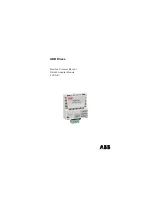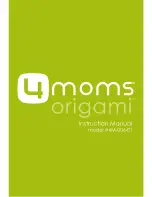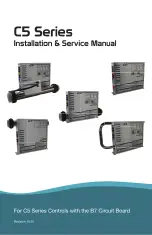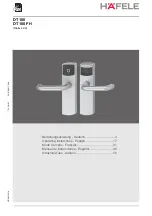
XRB60CHC EN r1.1 2018.11.01.docx
XRB60CHC
1/7
DIGITAL CONTROLLER WITH ADVANCED
ENERGY SAVING MANAGEMENT AND
BLUETOOTH CONNECTIVITY
XRB60CHC
1
GENERAL WARNINGS ................................................................................................................................... 1
2
GENERAL DESCRIPTION .............................................................................................................................. 1
3
REGULATION .................................................................................................................................................. 1
4
ENERGY REDUCTION ALGORITHM ............................................................................................................ 1
5
EXTRA COOLING FUNCTION ....................................................................................................................... 2
6
EVAPORATOR FANS ..................................................................................................................................... 2
7
DEFROST ........................................................................................................................................................ 2
8
INTERNAL COUNTERS .................................................................................................................................. 2
9
FRONT PANEL COMMANDS ......................................................................................................................... 3
10
PARAMETERS ................................................................................................................................................ 3
11
DIGITAL INPUT ............................................................................................................................................... 5
12
INSTALLATION AND MOUNTING.................................................................................................................. 5
13
OPTIONAL FEATURES .................................................................................................................................. 5
14
ELECTRICAL CONNECTIONS ....................................................................................................................... 5
15
USE THE HOT KEY......................................................................................................................................... 6
16
ALARM SIGNALLING ...................................................................................................................................... 6
17
TECHNICAL DATA .......................................................................................................................................... 6
18
WIRINGS .......................................................................................................................................................... 6
19
APPLICATION NOTES .................................................................................................................................... 6
20
BLUETOOTH COMMUNICATION .................................................................................................................. 6
1
GENERAL WARNINGS
1.1
PLEASE READ BEFORE USING THIS MANUAL
•
This manual is part of the product and should be kept near the instrument for easy and quick
reference.
•
The instrument shall not be used for purposes different from those described hereunder. It cannot be
used as a safety device.
•
Check the application limits before proceeding.
•
Dixell Srl reserves the right to change the composition of its products, even without notice, ensuring
the same and unchanged functionality.
1.2
SAFETY PRECAUTIONS
•
Check the supply voltage is correct before connecting the instrument.
•
Do not expose to water or moisture: use the controller only within the operating limits avoiding sudden
temperature changes with high atmospheric humidity to prevent formation of condensation
•
Warning: disconnect all electrical connections before any kind of maintenance.
•
Fit the probe where it is not accessible by the End User. The instrument must not be opened.
•
In case of failure or faulty operation send t
he instrument back to the distributor or to “Dixell S.
r.l
.” (see
address) with a detailed description of the fault.
•
Consider the maximum current which can be applied to each relay (see Technical Data).
•
Ensure that the wires for probes, loads and the power supply are separated and far enough from each
other, without crossing or intertwining.
•
In case of applications in industrial environments, the use of mains filters (our mod. FT1) in parallel
with inductive loads could be useful.
2
GENERAL DESCRIPTION
The
XRB60CHC
,
32x74x60mm format
, is a microprocessor based controller suitable for applications
on medium or low temperature ventilated refrigeration units. It has 3 relay outputs to control
compressor, fans, light and defrost or auxiliary output. The device is also provided with up to 4 NTC
probe inputs: the first one for temperature control, the second one to be located onto the evaporator to
control the defrost termination temperature and to manage the fan and the third, optional and located
on the HOT-KEY port, used to control the condenser temperature. There is also a configurable digital
input. By using the
HOT-KEY
it is possible to program the instrument in a quick and easy way.
The controller has Bluetooth 4.2 connectivity.
3
REGULATION
The regulation is performed according to
the temperature measured by the
thermostat probe with a positive
differential from the set point: if the
temperature increases and reaches set
point plus differential, the compressor will
start. The compressor will stop when the
temperature reaches the set point value
again.
In case of fault because of the thermostat probe, the start and stop of the compressor are timed
through parameters
CoF
and
Con
.
4
ENERGY REDUCTION ALGORITHM
4.1
DESCRIPTION
The device permits to set different temperature to be used during normal and reduced power use. The
standard SET-POINT (
SET
) is used to maintain the temperature at a certain value when the energy
saving status (ES) is not active. On the other side, when the ES status is active a different SET-POINT
(
SET_ES
), higher than the standard one, will be used. The parameter
HES
will have to be set to
change the regulation temperature according to the following formula:
SET_ES = SET + HES
There are also two different differential values for
SET
and
SET_ES
, which are used for compressor
cut-in and cut-out: when ES status is active the
HYE
parameter will be used instead of the
HY
parameter.
The device uses special
E
nergy
r
eduction
A
lgorithm (
ErA
algorithm from Dixell) to optimize loads
activation during the day. It is possible to set two different algorithms (
ErA=bAS
or
Aut).
They differ for
the used sensor and for the total length of the interval of time involved.
4.2
BASIC ENERGY SAVING ALGORITHM
–
ErA=bAS
This will be used when
ErA=bAS
. The energy saving status will be always saved in the internal
memory to resume previous operation if a power failure occurs. It needs the presence of a door switch
to work (
i1F=dor
).
4.2.1
Parameter involved and suggested values:
-
ErA=bAS
-
i1F=dor
-
StE=4.0 hours
-
EtS=6.0 hours
-
HES=4.0 to 5.0 °C
-
HYE=3 to 4°C
-
dS=5 to 10 sec
-
LdE=Y
FROM
TO
CHANGED BY
Normal
mode
Energy
Saving
- Push the
DOWN
button for 3 sec (if enabled).
- Door continuously closed for the
StE
time.
Energy
Saving
Normal
mode
- Push the
DOWN
button for 3 sec (if enabled).
- Controller in ES mode for the
EtS
time.
- If the controller is in ES mode, it returns in Standard mode
(normal set-point) after opening the door more than
dS
time.
NOTE:
the cycling mode (ES - Normal mode - ES - etc.) works if
i1F=dor
and
EtS
and
StE
are
different from zero. If
EtS=0
or
StE=0,
the controller will not change the operating mode,
and it will be
possible to change from the normal mode to the energy saving mode by using ES button or by setting
i1F=ES
. See the below diagrams where the status changing is depicted:
4.3
AUTOMATIC ENERGY SAVING ALGORITHM
This will be used when
ErA=Aut
. The operations are controlled by using the
Aid
parameter. After
powering on the device, it automatically starts to analyze the temperature behavior by using the only
room temperature probe. In this way it can build the best energy saving model according to the
application. The device uses temperature behavior information of the previous
Aid
interval to manage
the loads during the current period. When
Aid
is set to use long periods (
Aid>1
), a day-by-day model
will be used during the first interval of time.
4.3.1
Parameter involved and suggested values:
-
ErA=Aut
-
HES= 3.0 to 5.0°C
-
LdE=Y
-
Aid=1 or 7
-
nCE=4
-
nCC=8
-
Pdt=2
-
HYE=3 to 4°C
-
PPU=P1
-
tun=depends on the regulation probe placement
NOTES:
1.
In case of any blackout, the calculated energy saving model will be reset.
2.
ErA
can exclusively drive the light output by using the
LdE
parameter. When
LdE=YES
, the
light output status will change according to the energy saving (ES) status:
a.
OFF if ES is active
b.
ON if ES is not active
3.
It is always possible to override the light output status by using the frontal button. Anyway, this
modification will have a temporary impact on the lights if
LdE=YES
. In fact,
ErA
will take the
control after the next ES status change.
4.
ErA
does not need any door switch input to work
.
5.
Be sure to place the room temperature probe in near the upper zone of the cabinet: this gives
the best results in terms of temperature variation analysis.
6.
The
Aid
parameter indicates the interval of analysis as “number of days”. The suggested
values for it are 1 or 7, depending on the particular application.

























